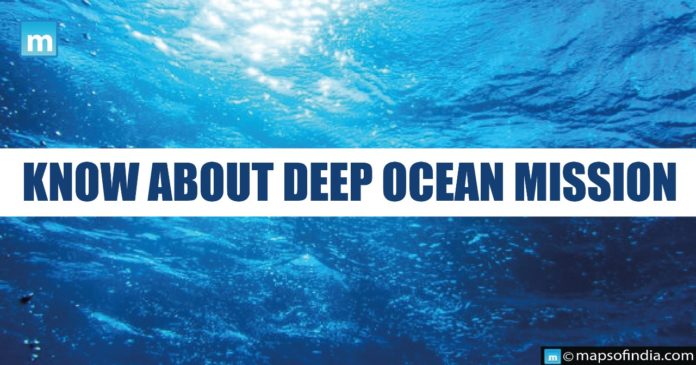The Mission is expected to cost Rs. 4,077 crores during a five-year term and will be executed in stages. The MoES will be the nodal ministry in charge of carrying out this multi-institutional ambitious objective. It will be a mission-style project to assist the Government of India’s Blue Economy Objectives.
The Blue Economy is responsible for utilising ocean resources for economic growth, livelihood opportunities, employment, and the health of ocean ecosystems. Only five countries today have the technology and experience required for such missions: the United States, Russia, France, Japan, and China. India is the 6th country to implement it.
Significant Elements of the Mission:
Technology Development and Manned Submersible Operations
- There are plans to construct a manned submersible that can transport three individuals to a depth of 6,000 meters in the ocean, equipped with scientific instruments and equipment.
- A Polymetallic Nodule Mining System will be designed to extract polymetallic nodules from the central Indian Ocean depths.
- Polymetallic nodules are seafloor rocks that include iron, nickel, cobalt, and manganese.
- The International Seabed Authority, a United Nations organisation, is developing a code for the commercial exploitation of minerals shortly. These investigations will lay the groundwork for economic exploitation.
Creation of Ocean Climate Change Advisory Council
- It requires collecting data and models to better understand and forecast significant seasonal and decadal climate parameters.
Technological Advancements for Deep-sea Biodiversity Exploration and Conservation
- The major focus will be on the bio-prospecting of deep ocean flora and fauna, including microorganisms, and research on the sustainable use of marine bio-resources.
Deep Ocean Research and Exploration
- A primary objective of this study will be to examine and identify prospective multi-metal hydrothermal sulfide mineralisation sites in the mid-oceanic ridges of the Indian Ocean.
Resources and Freshwater from the Ocean
- As part of this proof-of-concept project, comprehensive studies and technical designs will be developed for offshore Ocean Thermal Energy Conversion (OTEC) powered desalination facilities.
- OTEC is an instrument that collects energy from fluctuations in ocean temperature from the top to depths of fewer than 1100 metres.
- The Advanced Marine Station for Ocean Biology aims to build human capability and entrepreneurship in ocean biology and engineering.
- It will leverage capacity-building facilities onsite to integrate research into industry uses and product innovation.
Importance of the Mission
The oceans, which span 70% of the earth, continue to play an important role in our lives. Approximately 95% of the Deep Oceans is undiscovered. The ocean surrounds three sides of India. With over 30% of the country’s population residing in coastal areas, the ocean is a key economic force supporting fisheries and aquaculture, ecotourism, livelihoods, and the blue economy.
India enjoys a privileged marine position. It has nine coastal states and 1382 islands along its 7517 km-long coastlines. In the GOI’s Vision of New India by 2030, announced in February 2019, the Blue Economy was highlighted as one of the ten essential pillars of growth.
Oceans are also a supply of nutrition, energy, minerals, and medicines, as well as weather and climate regulator that supports life on earth. Given the importance of the oceans to long-term sustainability, the United Nations has designated the decade 2021-2030 as the Decade of Ocean Research for Sustainable Development.




